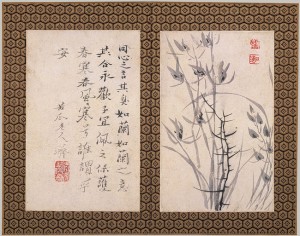The first documenta I attended was documenta IX, in 1992. Only two artworks there moved me: a minimalist piece by Jean-Pierre Bertrand, and a work of conceptual tropicalia by Cildo Meireles.
Jean-Pierre Bertrand (1937-2016, France) presented a wide rectangle hung on the wall, divided into 10 narrow vertical panels. Each panel was filled with organic materials mixed together and cooked (honey, fruit juice, cooking-salt solution) to make a smooth paste, which he then glazed. The panels were of two different colours: reading from the left, panels 1 and 9 were red, the others off-white. They shone quietly on the wall, their simplicity and timeless calm an antidote to the breathless featurism of the rest of documenta, a thousand artworks each shouting “Me! Me! Look at Me!”.
A later work by Bertrand, Bright yellow green no. 1, was acquired by the Art Gallery of NSW, described here. As with many post-war artists and composers, his art is profoundly concerned with the materiality of the medium he uses, the actual and specific physical attributes of the oils and paints, and the ways in which these attributes influence the visual image they are part of. This concern by visual artists goes back at least to Turner.
Cildo Meireles (1948-, Brazil) fitted a square room with 2000 loudly ticking clocks on the walls, all set to different times, and hung 7600 yellow folding tape measures from the ceiling. To walk through the room, one had to push through the tapes, unable to see more than a step or two in front at any time. Nothing so evoked a tropical jungle as this installation: unable to see much, having to push vines out of the way, and assaulted by an insect cacophony.
documenta 13 will be held in 2012, details here.
